Hasegawa 1/48 Nakajima Ki-44-I Shoki
Here's another one I finished this year after my long hiatus from the hobby. I'm still on a big Japanese aircraft kick, as you can see. This is the 1/48 Hasegawa kit of the Nakajima Ki-44-I. It's an excellent kit that goes together simply, so it's odd, I think, that it's so rarely seen at contests or on build forums. I suppose this might be attributable to its somewhat odd appearance, what with its oversized cowling and stubby wings. But that's one of the things I find most appealing about this type. The large engine, small fuselage and stubby wings make it look a bit like a 1930s racing plane, at least to my eye.
I wanted to do this one in a natural metal home defense scheme, as I wanted to show that Japanese aircraft of the period could be quite colorful. I decided to use some spare markings to create a speculative scheme that could have easily existed, but isn't photographically documented anywhere. This aircraft is marked as one that could have flown with the Hitachi flying school, and carries the Hitachi unit marking on the tail. The only decals used were the Hitachi emblem, the tail number and the 'NO-STEP' stencils, all from Aeromaster. Everything else was masked and sprayed with my trusty Harder & Steenbeck Evolution Silverline. The base coat was Mr. Surfacer 1500 thinned 50/50 with Mr. Leveling Thinner. Over that went a coat of Tamiya gloss black acrylic, and then a coat of Alclad II duraluminum. After painting the markings and decaling, it got a coat of Tamiya gloss clear and then the panel lines were highlighted with Tamiya panel line accent. What really made this one look good to me in the end was the new weathering technique I tried. After the final matte varnish was mostly cured, I took a folded pad of paper toweling and lightly dragged it along the airframe front to back, in the direction of airflow. Then I took a sharp toothpick and scratched away the varnish in an irregular pattern wherever the crew tended to walk or work. The effect is very subtle, and only becomes apparent with the light at certain angles. It gives the appearance of dust and dirt that has been streaked by airflow, and scuffed where feet and hands have contacted the aircraft. I'll be doing this from now on on all of my natural metal finishes.
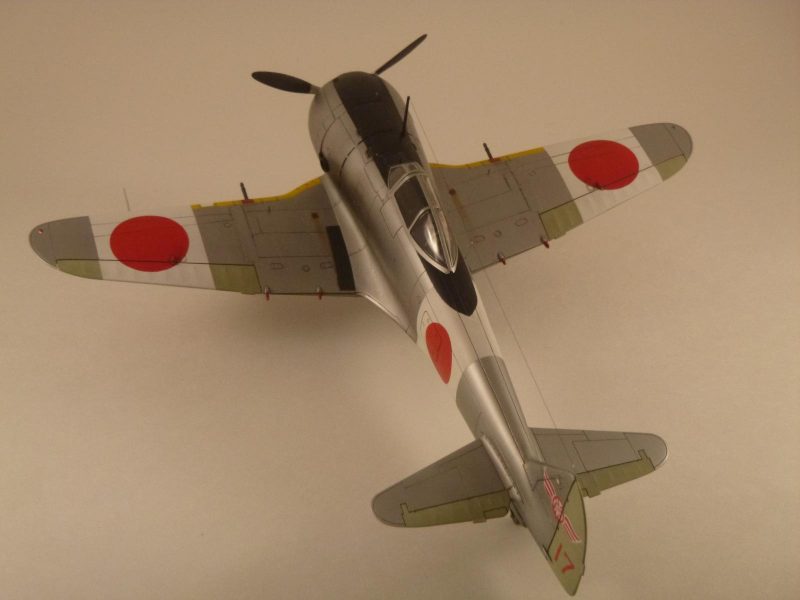
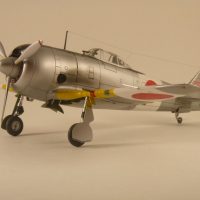
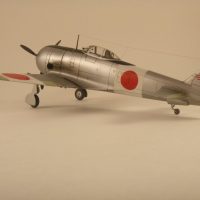
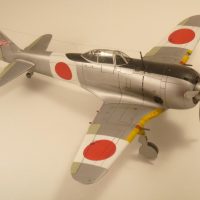
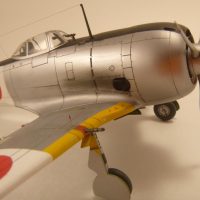
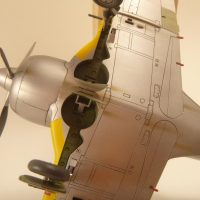
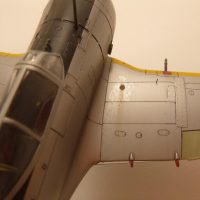
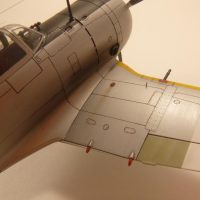
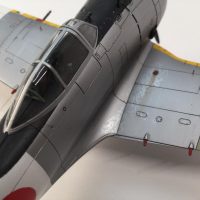
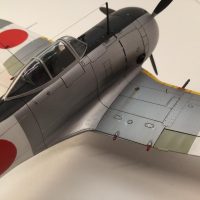
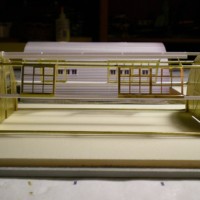
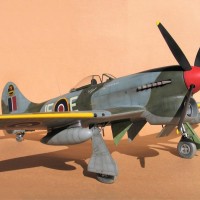
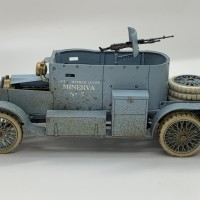

Nice build Steven. Despite your hiatus, you never missed a best. I love the lines is the Ki-44 too. The forward placement of the horizontal stabilizers in relation to the vertical stab always intriguing me. Thanks for sharing!
First, you've done a great model there. A very spiffy NMF and I do like your weathering techniques, for sure.
I happen to think the Shoki is a very hot looking ship. Very unique design, all engine no tail. Reverse pear-shaped? I've seen plenty on the tables over the years. Once a 48th of mine beat a guy that usually beats me like a rug. My 1/32 got best aircraft at a local, at another...Nada. Never can tell by the ways of the judges. But enter yours, (hopefully the shows WILL come back soon) I'm sure it will do well. And keep on building.
Great build. The NMF finish and painted markings look really good.
Thank you all for the kind words. I forgot to mention that I got the weathering technique from the PLASMO channel on YouTube. It's demonstrated in his build of the Eduard P-51D, and it's well worth a watch.
An excellent model, Steven @mooplace and the weathering technique is both interesting and successful.
I agree we haven't seen that many Tojos built, but my intuition tells me we will see more and more in the future!
This is a beautiful build, Steven.
The applied weathering thechnique surely looks great.
Steven, @mooplace
Thanks for sharing this build with us, and welcome to Imodeler. I see you are a fan of David Allen 🙂
You have built a fine looking model, and I agree with you about the body lines of this type. It's one of my favorite Japanese aircraft, right up there with the Ki-61. This would have been another good build to post your during construction pictures.
If you have any more Japanese kits left to build from the 1919 to 1946 era, and would like to join us in our "Empire of Japan" group build, please feel free to do so. You can check it out by following this link and see all of the wonderful work that has been built right here on Imodeler.
https://imodeler.com/groups/the-empire-of-japan-1919-1946/
It's open to everyone.
Another beauty! Love the -44, and your paint and finish work is excellent.